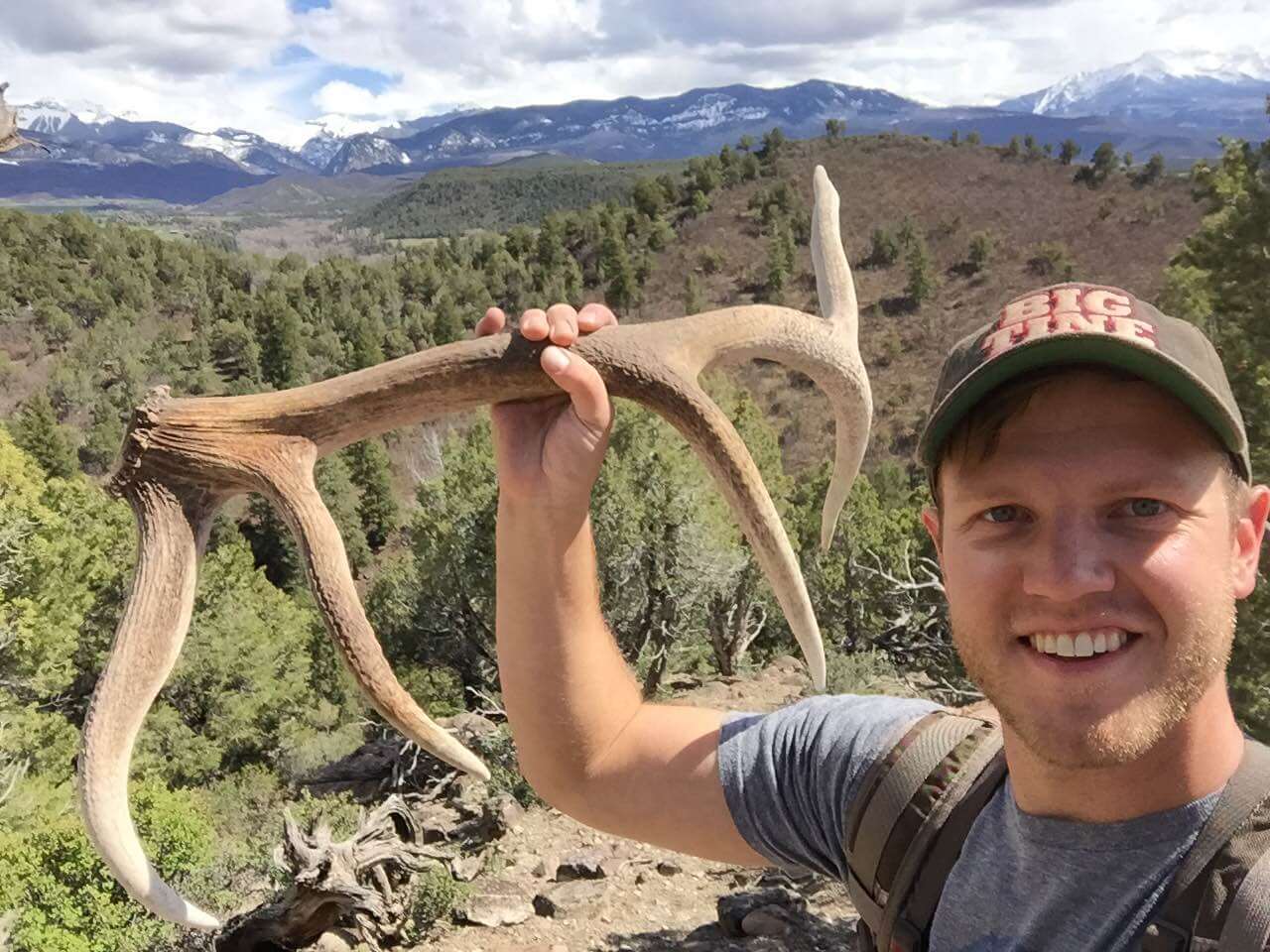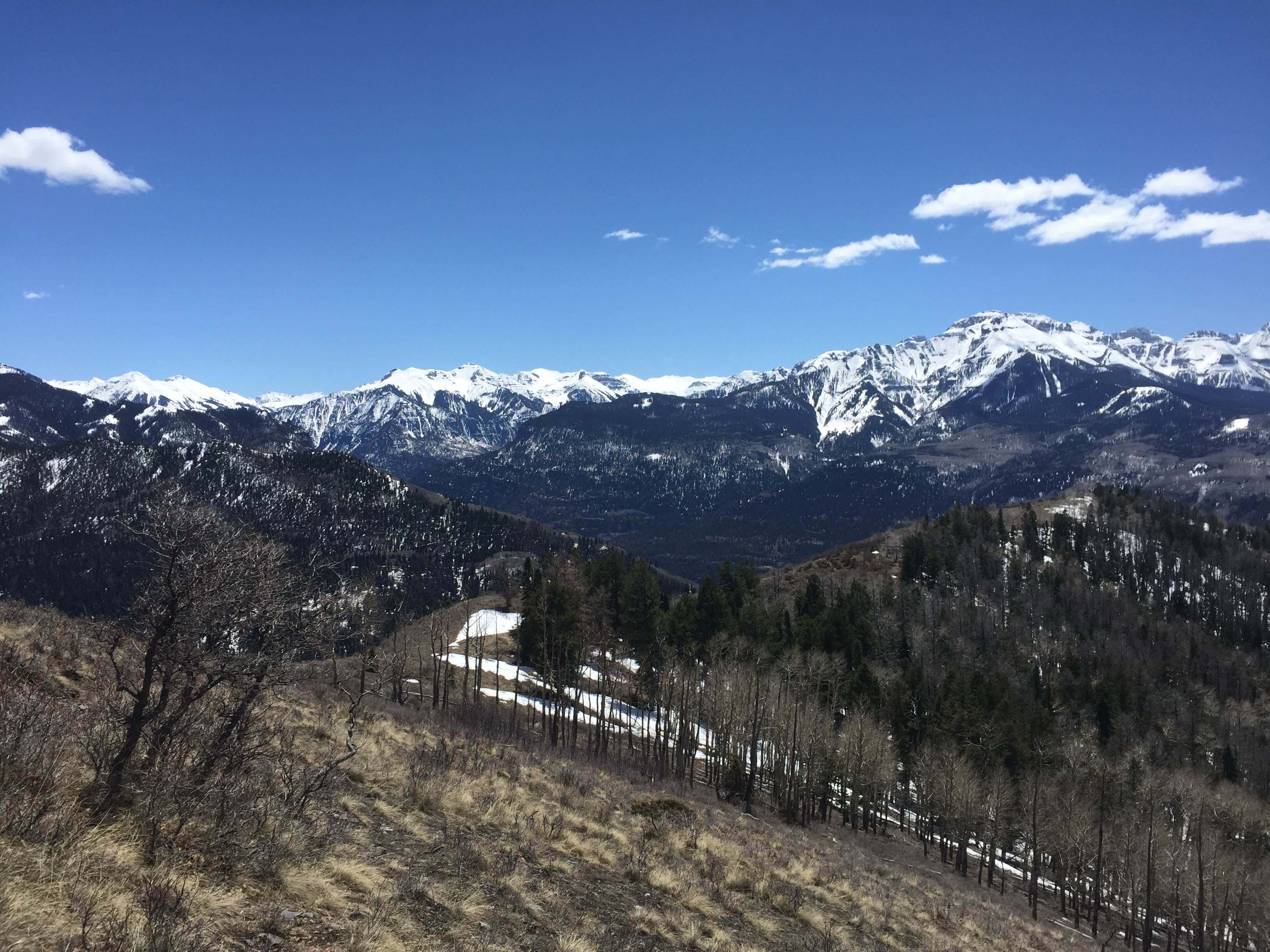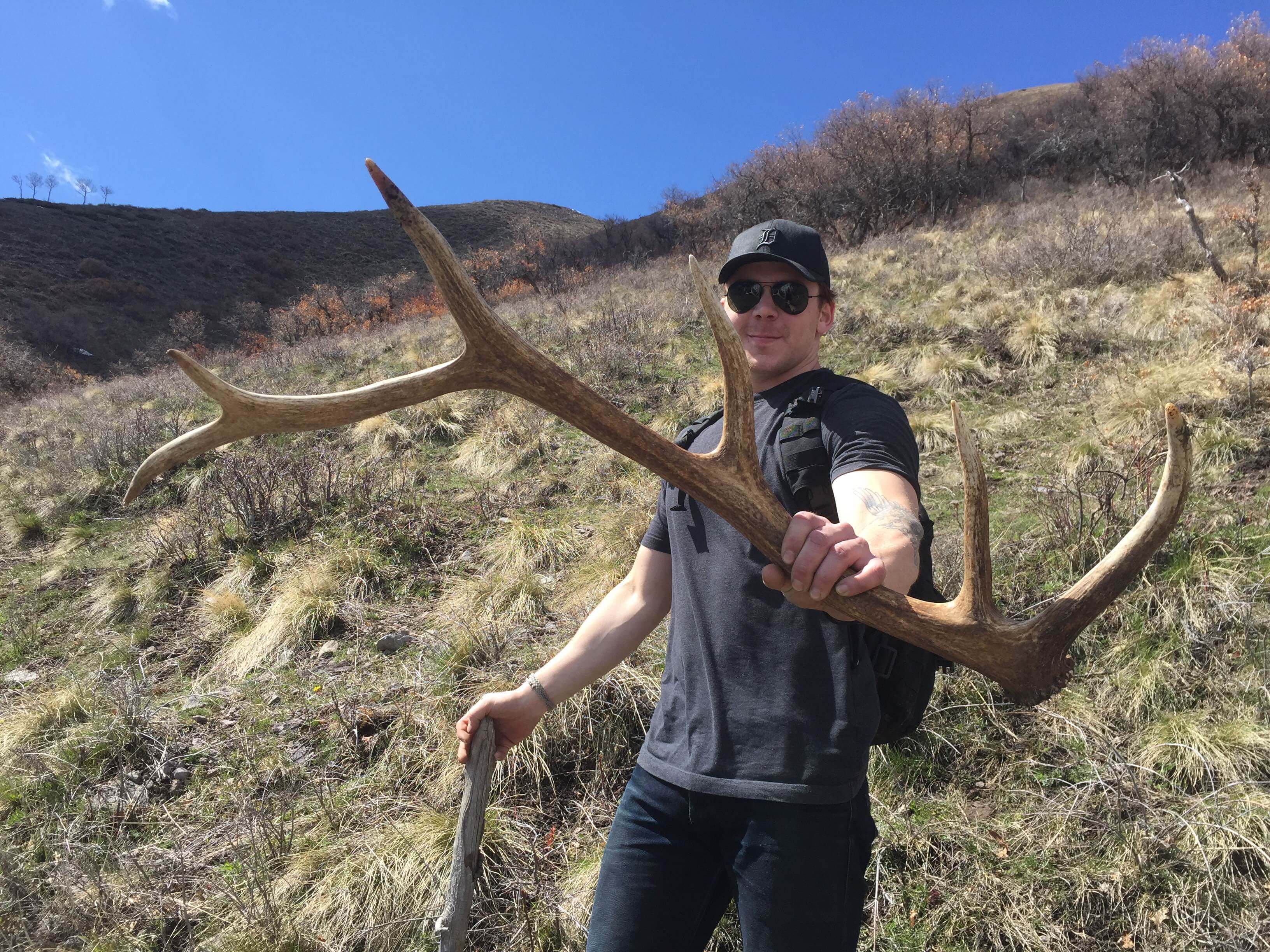transition wild
Off

By Adam Parr
For the past few years, I’ve struggled to find elk antlers in the mountains of Colorado and quickly became frustrated with the lack of my success. One consistency I’ve come to realize over the past two seasons is that elk shed hunting is simply a different ball game. Comparatively to both whitetails and mule deer, elk antlers always seemed to elude me while deer antlers were relatively easy to find.
The entire purpose of my blog is to document my findings as I embrace a new lifestyle in a much more extreme terrain and environment. With that being said, I believe any midwestern whitetail hunter can have success in their first season shed hunting for mule deer because a lot of the same principles apply. Mule deer are found at lower elevations during the winter months, making them easier to pattern and are easily accessible. They seem to hold more of a consistent pattern for longer periods of time, while an elk herd has a much larger range and can be found in a completely different area from one day to the next.
Below are a few tips to help shorten your elk shed hunting learning curve and to get you on the fast track to finding brown gold!
No, I’m not making a 420 reference here; I’m talking elevation. As a general rule of thumb, the majority of mature bulls are going to be found at higher elevations than the smaller bulls and cows. Although mule deer and elk wintering areas will have some cross-over, most of the lower elevation elk sign will be cows and young bulls.

Bull elk prefer seclusion at higher elevations during Winter months.
In areas of extreme snowfall and harsh winter conditions, even the herd bulls will get pushed down to lower elevations out of necessity to survive. The key thing to remember is that elk typically shed their antlers much later in the Spring than deer, so it is important to pay attention to snow accumulation. This past Winter, snowfall was heavy in December, January, and February but March and April were mild with very little accumulation. A mild Spring caused the elk to move back up to higher areas of the mountains during the time that the majority of shedding occurs.
The key word here is seclusion. Bigger bulls and elk in general, prefer seclusion and will not tolerate human interaction, which is why you also find them at higher elevations. A great way to locate these areas is through the use of Google Earth, which shows the terrain features from a birds-eye view before ever stepping foot on the ground. Looking at maps prior to entering an area lets you visualize the terrain without wasting time and energy scouring areas that are unproductive.
Mule deer and cow elk will be found closer to roads and human traffic, but don’t be fooled by these visuals. Bull elk are seeking solidarity out of eyesight over the next mountain top.
Much like livestock and cattle, elk require an average of 20 pounds of grass and browse vegetation to sustain themselves through a harsh Winter so it’s imperative to locate food. These large grassy meadows, which are predominately found on South facing slopes can be easily identified, once again from Google Earth. By keeping this information in mind, it will help you locate potential feeding areas that elk will utilize on a regular basis.

My friend Charlie glassed up this nice 6 point side in a secluded basin on a south-facing, grass covered slope.
No matter how good a secluded basin looks at a high elevation, if it doesn’t have a plentiful amount of food, the elk will be nowhere in sight. This seems like common sense to many people but this is something I struggled with early on and I wasted a lot of hours searching areas that did not hold bulls or any elk, for that matter.
If you want to start having serious success with elk sheds, locate the ultimate elk wintering area; A secluded basin, with an abundance of food at high-elevation. Once you find an area like this, the probability of it being a great spot year after year will be high. For some added advice, be sure to check out this quick video from Mark Kayser, Tips For Finding Elk Shed Antlers.
It is also important to be in very good physical shape if you want to attempt getting into secluded areas of elk country. The terrain is tough, the air is thin and the distance is far, but If you are willing to put in the work, shed antler success will follow.
For additional shed hunting tips and helpful information, be sure to check out 4 New School Tips For The Beginner Colorado Shed Hunter. Happy shed hunting!